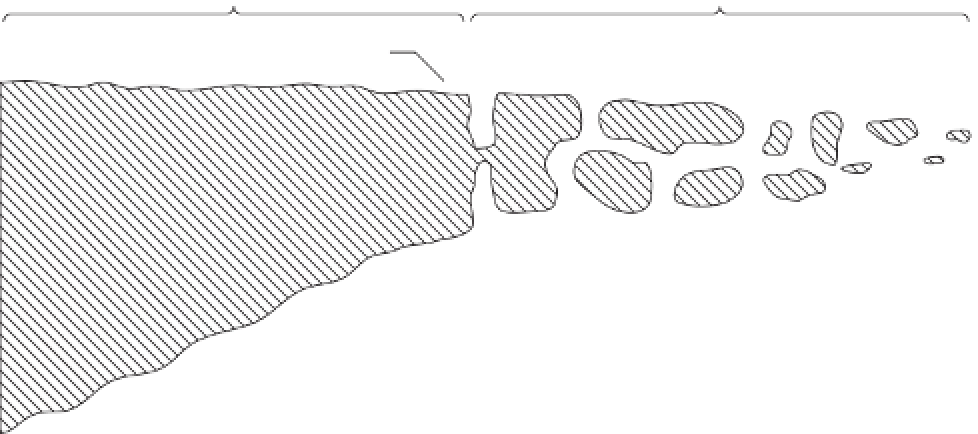Geology Reference
In-Depth Information
North
Continuous zone
Discontinuous zone
South
Permafrost table
Active layer
0.5m
3m
10m
50m
Permafrost
(may be hundreds
of metres thick)
Talik
Figure 11.2
Transect across continuous and discontinuous permafrost zones in Canada.
Source:
Adapted from Brown (1970, 8)
Table 11.1 Types of ground ice
Type
Subtype
Formative process
Epigenetic (formed within
pre-existing sediments)
Needle ice (pipkrake)
Forms under stones or patches of earth that cool rapidly as air
temperatures fall
Ice wedges
Freezing of water in polygonal cracks
Pore ice
In situ
freezing of subsurface water in voids
Segregation ice
Migration of water through voids to a freezing surface to form
segregation ice layers and lenses
Intrusive ice
Injection of moisture under pressure into sediments
Aggradational ice
Upwards migration of the permafrost table, combining many
segregated ice lenses, owing to a change in the environment
Syngenetic ice (formed in
accumulating sediments)
Buried ice
Burial of snowbanks, stagnant glacial ice, or drift ice by deltaic,
alluvial, or other sediments
the freezing and thawing of water feature prominently,
are highly active under periglacial conditions and may
produce distinctive landforms.
for thousands of years, forming under past climates and
persisting as a relict feature.
Periglacial processes
Weathering
Most geomorphic processes occurring in periglacial zones
occur in other climatic zones as well. Fluvial activity in
particular is often the dominant process in periglacial
landscapes. Some processes, of which those related to
Geomorphologists have traditionally assumed that chem-
ical weathering is subdued under periglacial climates,
owing to the low temperatures, the storage of much






























